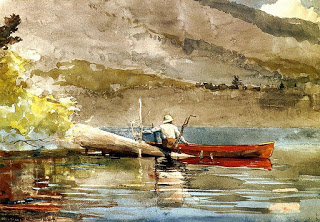I am still reading the fascinating book, Moonwalking with Einstein, by Joshua Foer - it rewards with lots of ideas. One that I found thought-provoking today is one about hitting a wall when you are trying to achieve proficiency in some activity, from golf to music or memory-training.
According to Foer, this limiting plateau is know to psychologists are the "OK plateau". When we learn a skill, we go through phases - the beginning "cognitive stage" when you are learning the ropes and finding out the best ways to accomplish the task. Then comes the "associative stage", when things are becoming more automatic and fewer errors happen. Finally, the "autonomous stage" is reached, when you are no longer really conscious of exactly what you are doing when performing the task. Being on autopilot allows us then to concentrate on other, less familiar things whilst still getting the job done, but there is a drawback. You no longer improve your particular skill.
I think that happens easily to all of us as artists. We work and work, practise and practise, and believe that the more we spend time doing art, the better we will become. But apparently, there is a remedy to the walls we all hit in our art. Thank goodness!
Professor K. Anders Ericsson of Florida State University's Human Performance Laboratory, Department of Psychology, in Tallahassee has apparently studied the top experts in many different fields and analysed their methods of working and improving skills. They all adopt similar strategies: they find ways consciously to keep their "autopilot" state from turning on when they practise. They pay close attention to their technique, they remain very clear about their goals, and they rely on lots of feedback that is frequent and immediate.
Applying this wisdom to making art seems to be very relevant. It makes the case for being flexible and inventive in the techniques we use for art-making, using new media, trying a different approach to media we already use... I think any successful artist knows that realistically-defined but very clear goals are vital ... and need updating and "nourishing" frequently. The feedback aspects are terribly important too, but harder for those of us who tend to work alone. It is a wonderful gift of the gods when one has a group of trusted and respected fellow artists, or even a friend, to whom one can show one's efforts and get reactions and feedback. Every time I am lucky enough to have a critique session with artist friends, I know that I learn and grow a great deal.
I find it so interesting to have these foundations for artist growth confirmed so elegantly in a book on enhancing memory. It is logical, but unexpected!
